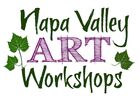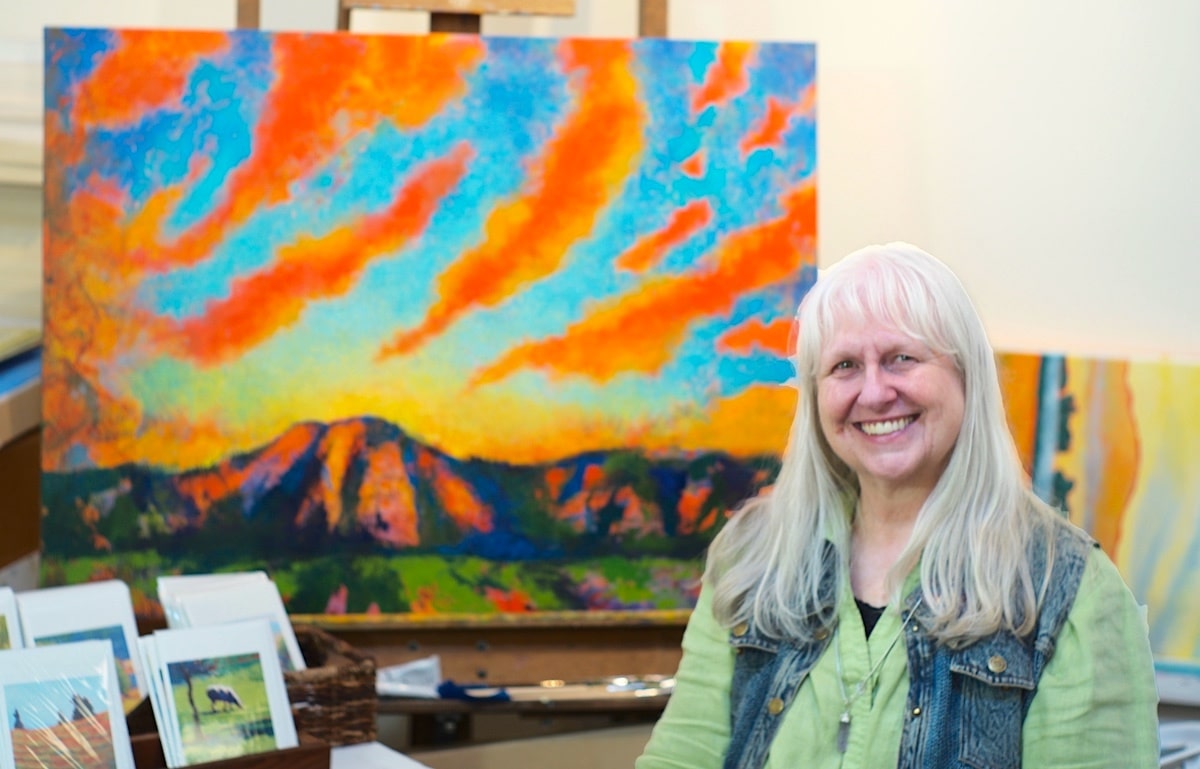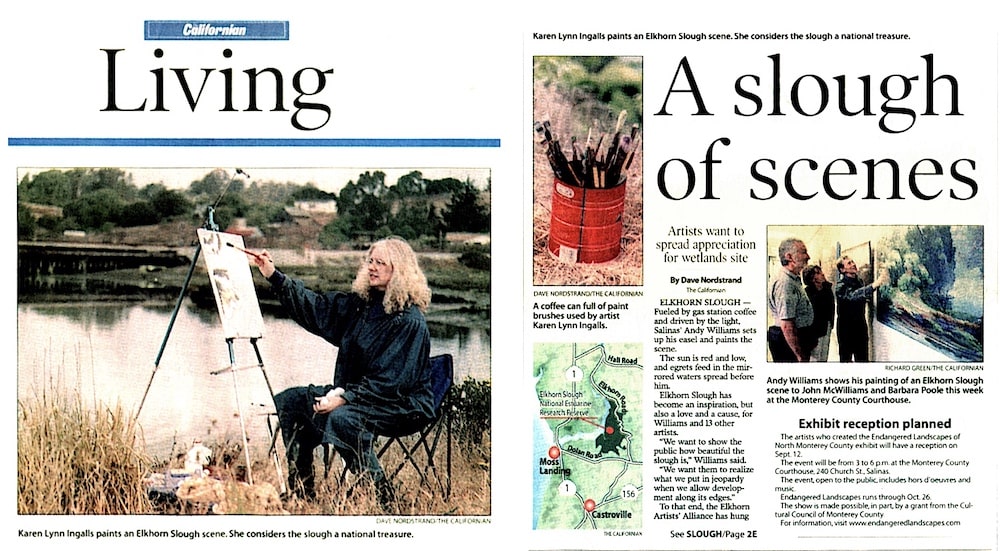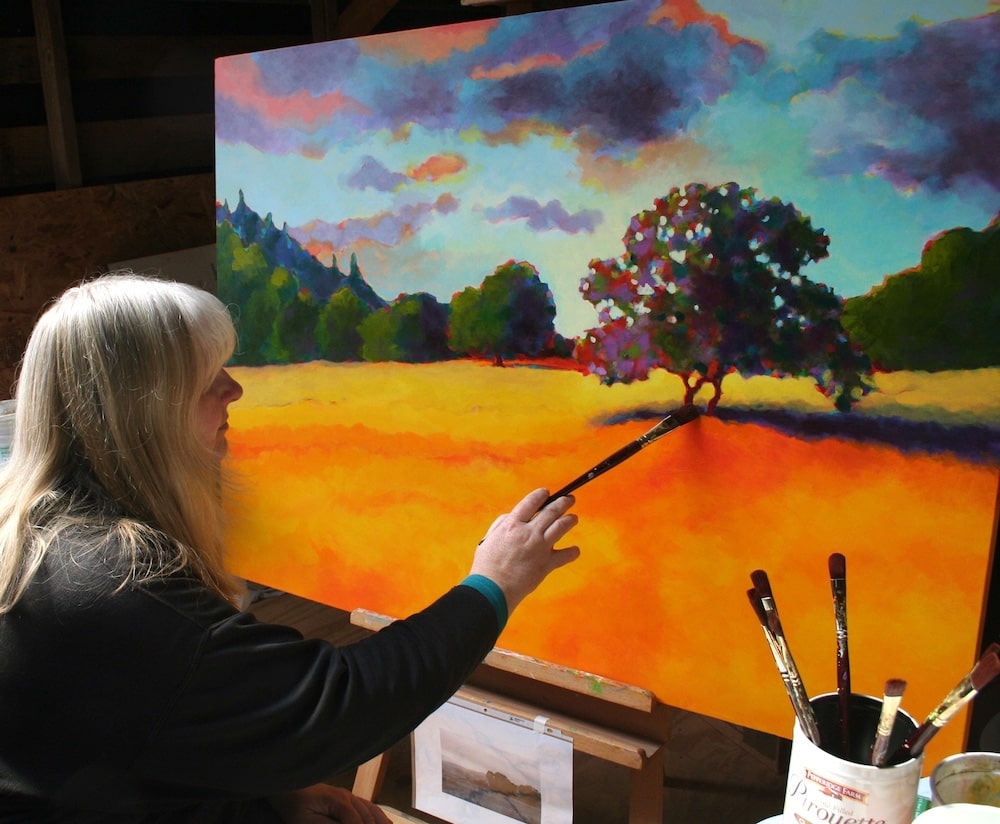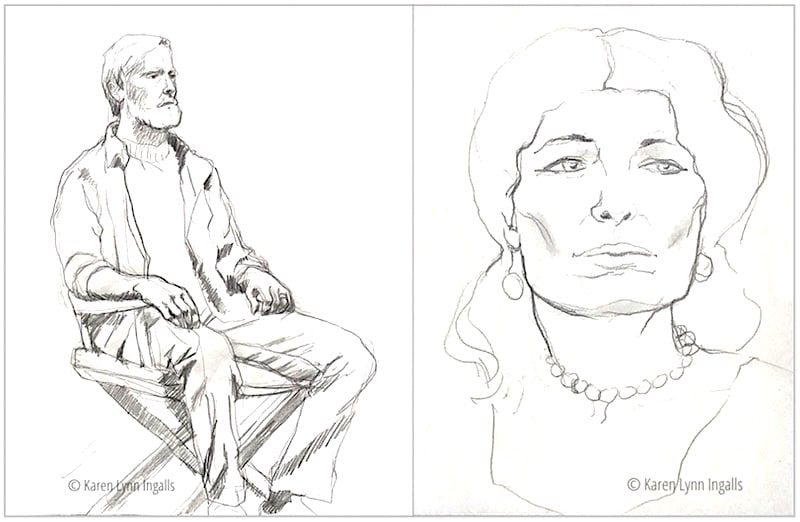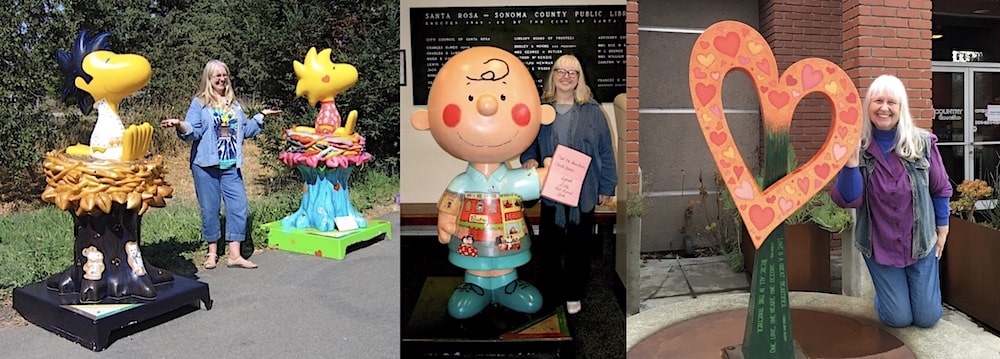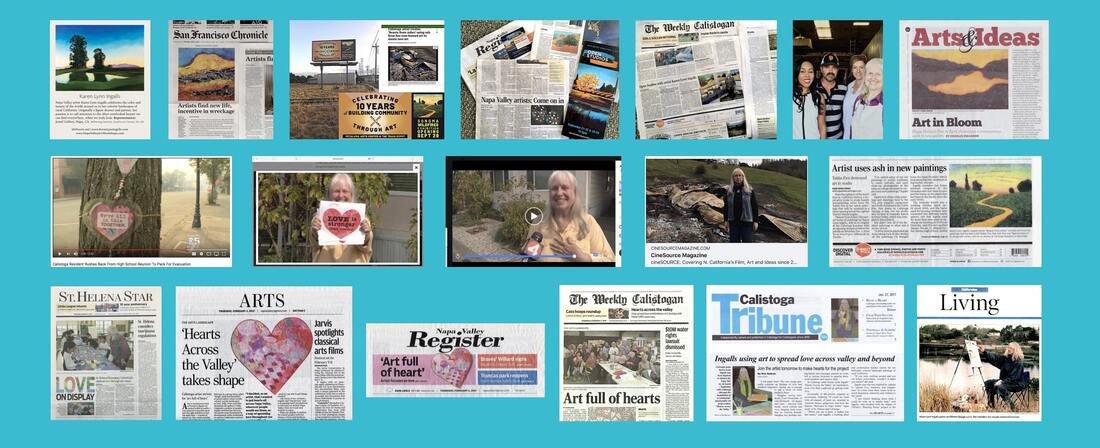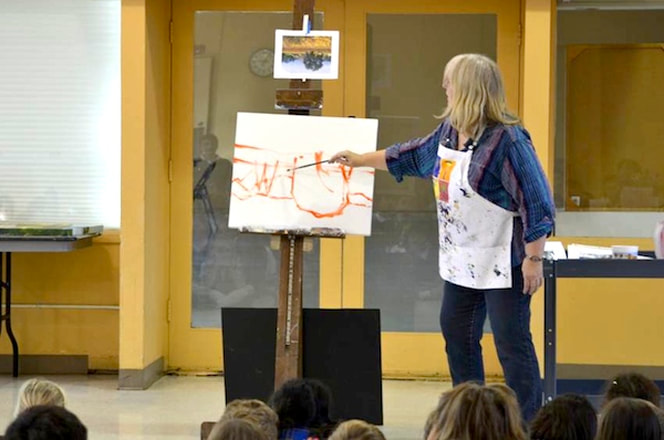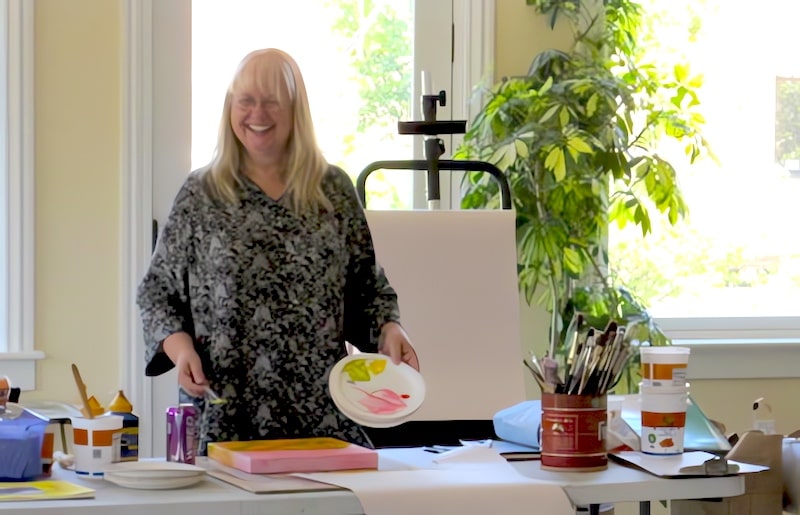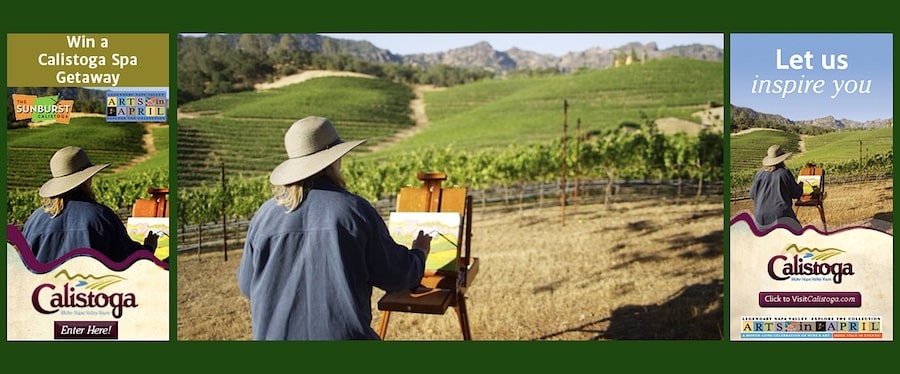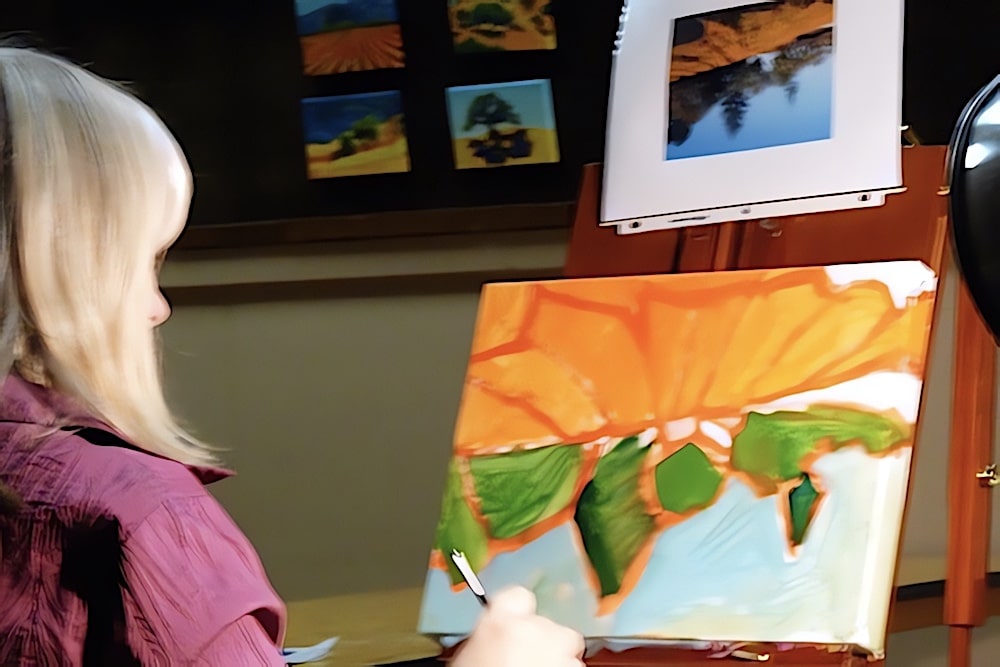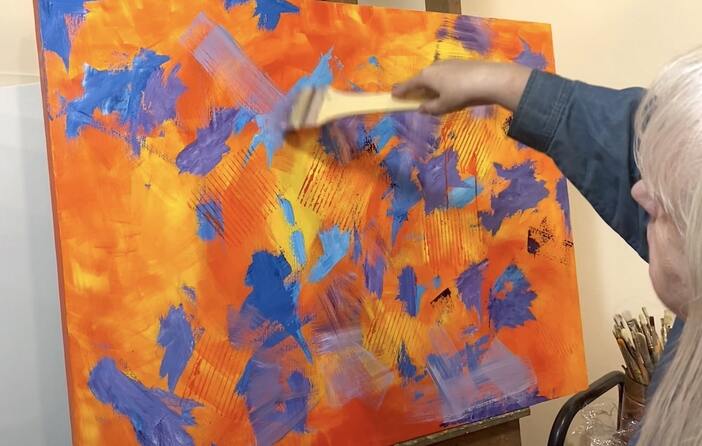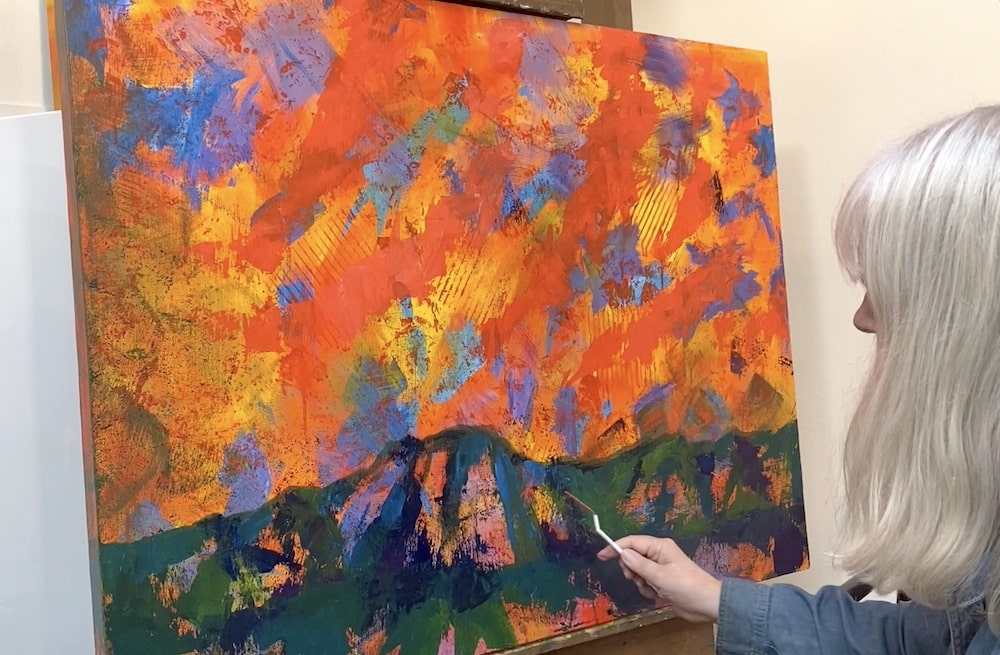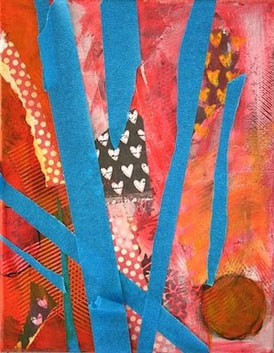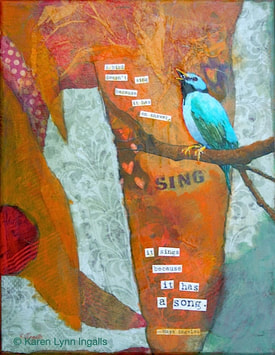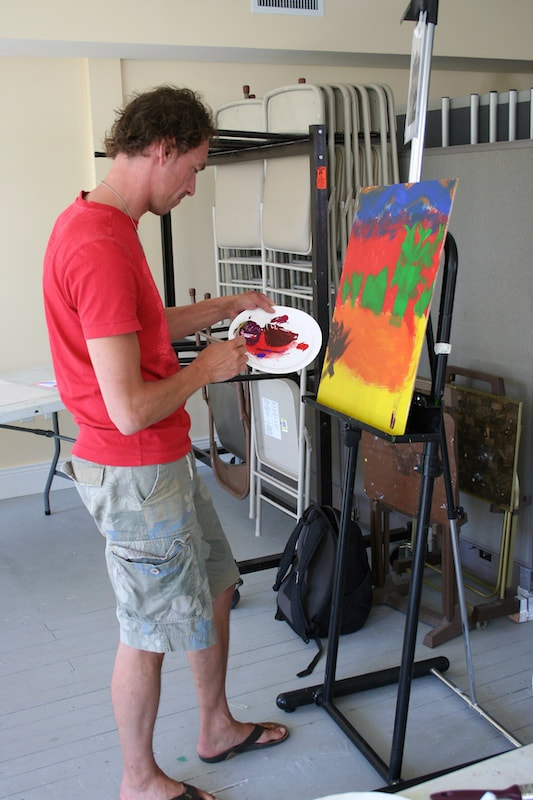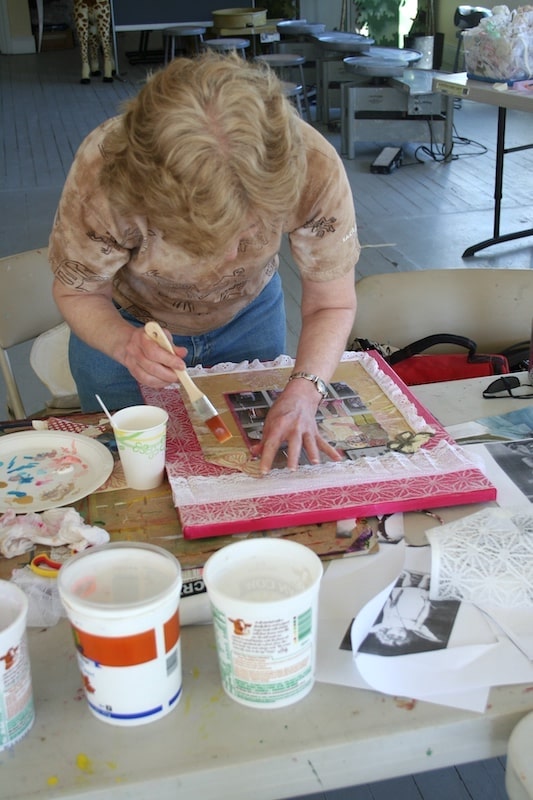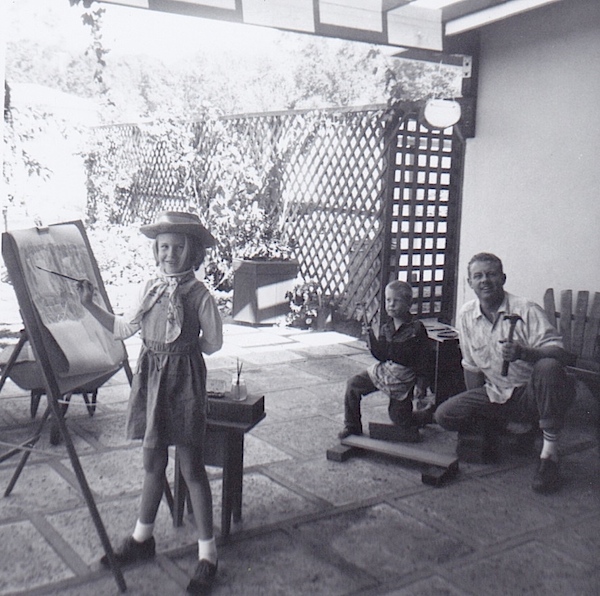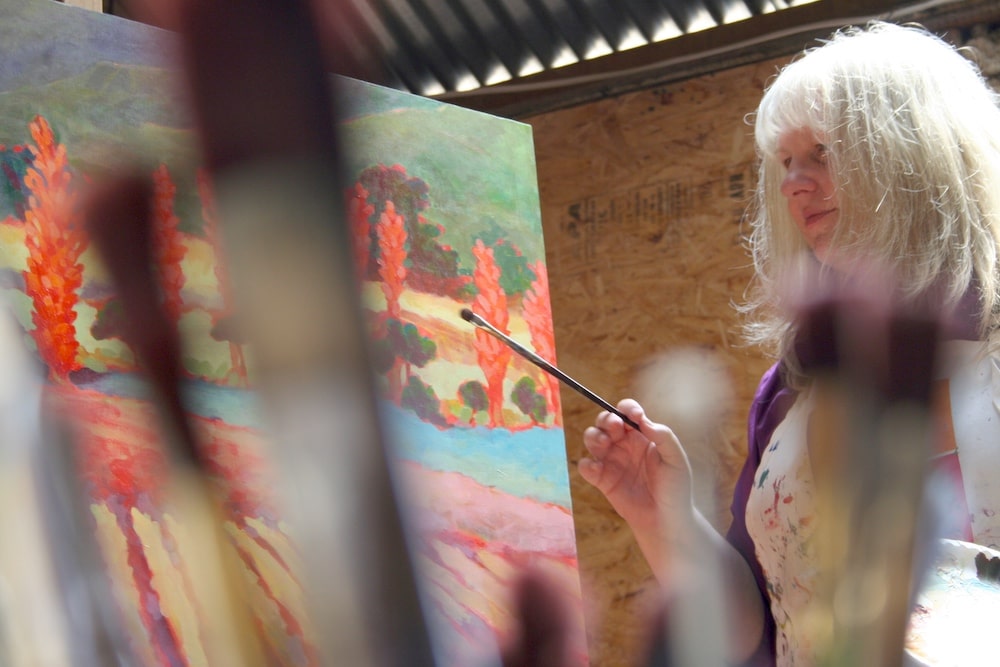About Artist and Teacher Karen Lynn Ingalls
About Karen as an Artist
Karen Lynn Ingalls creates colorist landscape paintings of rural California, and lives in Napa Valley, in the little town of Calistoga.
After losing her previous studio in the 2017 Northern California wildfires, her primary studio now is at Backstreet Gallery and Studios, in the SOFA Arts District in Santa Rosa, California, where you can visit her on the First Friday of every month from 5-8 PM.
Originally a painter and drawer of people, she began painting endangered landscapes — places threatened by development — as she worked with others to save a threatened wetlands area in Monterey County, where she lived at the time.
Mesmerized by the land, its colors, and its spirit, she continues to paint rural California.
She also draws, paints abstract and mixed media acrylic paintings, and creates block prints, using methods that she enjoys sharing with others in her classes and workshops. And she still enjoys sketching and drawing people, too, whenever she's able to squeeze in the time.
Her artwork, including paintings, drawings, collages, and life-sized painted sculptures, have been exhibited, and can be found in collections, on both west and east coasts of the United States, and a few places in between.
Her art and articles about it have appeared in local, regional, and national publications. She's also been interviewed for radio and television; and even had one of her paintings appear on a billboard.
About Karen as a Teacher
Karen became credentialed as a teacher in California, in both Art and English, and began teaching high school English in Monterey County, where she also met wonderful communities of artists.
Since then, she has taught art classes, lessons, and workshops, and given demonstrations to adults and children in Napa Valley, Sonoma County, and other parts of Northern California.
She taught for Napa Valley College Community Education, and gave art classes and workshops for adults and mature teens through the Calistoga Art Center, as well as private, group, and corporate art workshops. Currently her classes and workshops are all online, and she looks forward to being able to teach workshops in person at the art center again, when health and circumstances permit!
Karen's students frequently describe her as enthusiastic, inspiring, encouraging, and nonjudgmental.
Her specialy is teaching both the inner game of art — how to tap into your creativity and tame your inner critic — and the skills, tools, and techniques that help her students make better paintings, and develop their own styles.
She believes that making art in the spirit of experimentation and discovery is good for both the soul and the art.
And she's developed a special, step-by-step question-and-answer process that helps her students discover just what it is that their paintings need next, especially when they feel stuck, so they can fix what isn't working, and create artwork that they love.
Karen Lynn Ingalls's teaching philosophy
Painting is, at its best, a dialogue between the painter and the canvas.
At the beginning, the painter has lots to say...
...but as the painting progresses, the painter needs to stop, step back, look, and listen, more and more, to learn what it is the painting wants.
It's not about where you start — it's about where you take it — and where it takes you.
I teach my students how to look and listen more closely – and how to dive in to the heart of the creative process.
That means trusting the process, too. When you trust the process, no matter what, and you listen to the painting, magic happens.
That means trusting the process, too. When you trust the process, no matter what, and you listen to the painting, magic happens.
It's also about knowing who you are as a painter, too — where you're coming from, what the work means to you, and how to approach it in the way that works best for you.
It's not a one-size-fits-all kind of thing. It's definitely not about copying what someone else does — it's about bringing out the visual voice that is yours, that no one else in the world could express in the same way as you.
In my classes and workshops, we don't do critiques.
I teach and demonstrate methods, techniques, and things to look for; we look at the examples of other painters; and we practice and try things out in a spirit of experimentation.
Then we talk about what the work in front of us needs, just two of us at a time. You get the knowledge you need to make better paintings; I ask you questions that will help you discover how to best make that happen.
I teach and demonstrate methods, techniques, and things to look for; we look at the examples of other painters; and we practice and try things out in a spirit of experimentation.
Then we talk about what the work in front of us needs, just two of us at a time. You get the knowledge you need to make better paintings; I ask you questions that will help you discover how to best make that happen.
Every four-year-old is an artist. All too often, somewhere in the process of growing up, people in our culture stop making art. Something happens — a chance remark? an adult's criticism? — and the child decides that she or he must not be an artist, after all.
Learning to create means dipping back into the joys of creation that every four-year-old knows. But creativity isn't only joy. Sometimes it asks of us perseverance and patience, close observation, and the willingness to suspend judgement.
That last bit — the willingness — no, the need — to suspend judgement — comes harder when we're grown. Our inner critical voice pops up and tells us that we must be nuts to be painting, that the artwork before us looks like hell, and what were we thinking, anyway?
Learning to suspend criticism and judgement can be tough. But it's absolutely essential in order for creativity to flourish.
That's an important part of how I teach, and why I teach the way I do.
That's an important part of how I teach, and why I teach the way I do.
